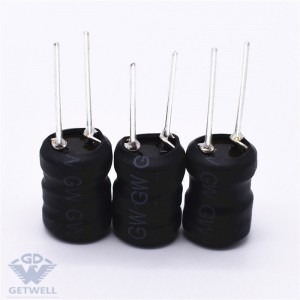You really should learn the resistor color codes. There are lots of sentences to help you remember like “Big Boys Race…” or “Bad Beer Rots…” However, if you haven’t learned them yet, you can ask Wolfram to go either direction. Try “4700 ohm resistor” or “Resistor red red orange,” for example.
But quite a bit of technology goes into making an accessory that makes your life that much easier. Most wireless chargers come in the form of circular or rectangular pads, some of which are propped up on legs to make stands that take up minimal space and work well as nightstand or desk accessories. But don't be fooled by their minimalist exteriors—there are a number of things you should know before investing in a wireless charging pad. To navigate this murky world, Ars tested out some of the most popular devices available now to see which are worth buying.
[A63B] APPARATUS FOR PHYSICAL TRAINING, GYMNASTICS, SWIMMING, CLIMBING, OR FENCING; BALL GAMES; TRAINING EQUIPMENT (apparatus for passive exercising, massage A61H)
When completed in a couple of years, the Ontario grid gains a vital link to customers in 13 U.S. states via PJM Interconnection, one of the largest wholesale energy markets in world.

The ask in today’s Ask Hackaday is for your favorite part that fills a particular gap: a MOSFET device that’s able to move a handful of amps of low-voltage current without losing too much to heat, that is still drivable from a 3.3 V microcontroller, with bonus points for PWM ability at a frequency above human hearing. Imagine driving a moderately robust small DC robot motor forwards with a microcontroller, all running on a LiPo — a simple application that doesn’t need a full motor driver IC, but requires a high-efficiency, moderate current, and low-voltage-logic compatible transistor. If you’ve been here and done that, what did you use?
This is “shit, there are no hardware hack articles to steal from dangerous prototypes today! Quick, write up a recap of Wikipedia and post that!, People hate dead air / no updates….” type of article.
To continue testing some of my design rules listed in the beginning I built a PCB to test the impedance of different PCB traces.
About 2 years later the Tile was developed by some Silicon Valley types who integrated newer technology (most importantly, bluetooth low energy came into existence which greatly reduced the power requirements), social capabilities (the tile could be tracked by any phone, in theory increasing the chance of you finding it) and with it the usual Silicon Valley mindset (non replaceable battery, etc). Due to the technological improvements the device was much smaller and a fair bit more convenient, but was really just the logical evolution of the Phone Halo, and TrackR was also bringing their next generation device to market right around with Tile came out. It was also successfully crowdfunded and later turned into a successful company as well.

âThat started a friendship with Bob, who told this amazing story that starts in China in the 1930s. There was this gifted engineer, K.T. Wang, who was way too smart to work on just his power plant management job. He made up electrical engineering brain teasers for himself and then solved them. Over years of doing this to keep his mind from turning into oatmeal, he noticed there was a pattern to some of these problems. They would be easy to set up, then horribly horrible to solve, and in the end the beast would collapse to something much simpler and very elegant. He wondered, âIs there a way to get to the end without going through the middle.â So, he came up with these weird ad-hoc rules that enabled him to shortcut a lot of the ugly math.
I’m a fan of Infineon’s Intelligent Power Switch (IPS) line. They’re basically a MOSFET with integrated drive and protection circuitry that defends them against over voltage, over temp, over current, and under voltage. They come in both high side and low side version, from a couple of amps up to dozens. They take 3.3V or 5V logic input and tend to have an open drain fault output. Some of them have integrated current sensing. They’re basically magic indestructible MOSFETs.
Highlighting significant trends of the global Power Choke market in terms of manufacture, revenue, and sales.
The goofy argument that people use sometimes is that it’s a smoother impedance transition. And obviously a smooth transition to a pad *can* have a smoother impedance transition (it can in fact have *no* impedance transition if you do it in CPWG and the component allows for it) but that’s not going to matter until *extremely* high frequencies. And if you’re working at those frequencies, you aren’t using the teardrop/fillet that the layout software produces anyway.
Farmington’s big, new electric substation is built to blend in » Albuquerque Journal | 100uh Inductor Smd Related Video:
Our company promises all buyers of the first-class products and solutions as well as most satisfying post-sale support. We warmly welcome our regular and new shoppers to join us for power filter transformer, smd inductor footprint, high frequency inverter transformer design, Our team knows well the market demands in different countries, and is capable of supplying suitable quality products at the best prices to different markets. Our company has already set up a professional, creative and responsible team to develop clients with the multi-win principle.




